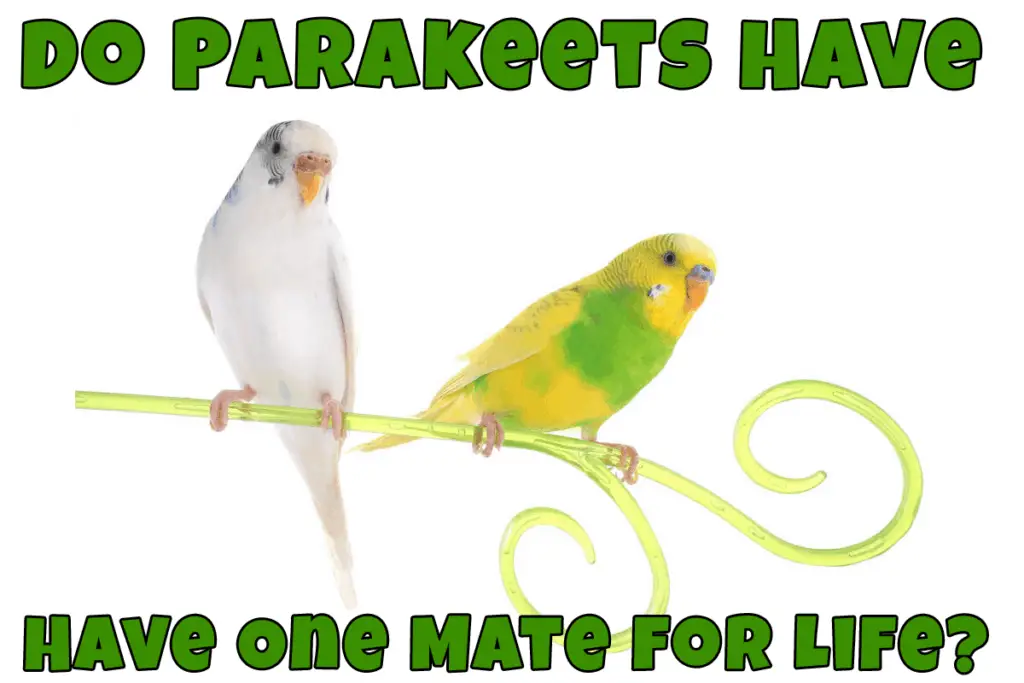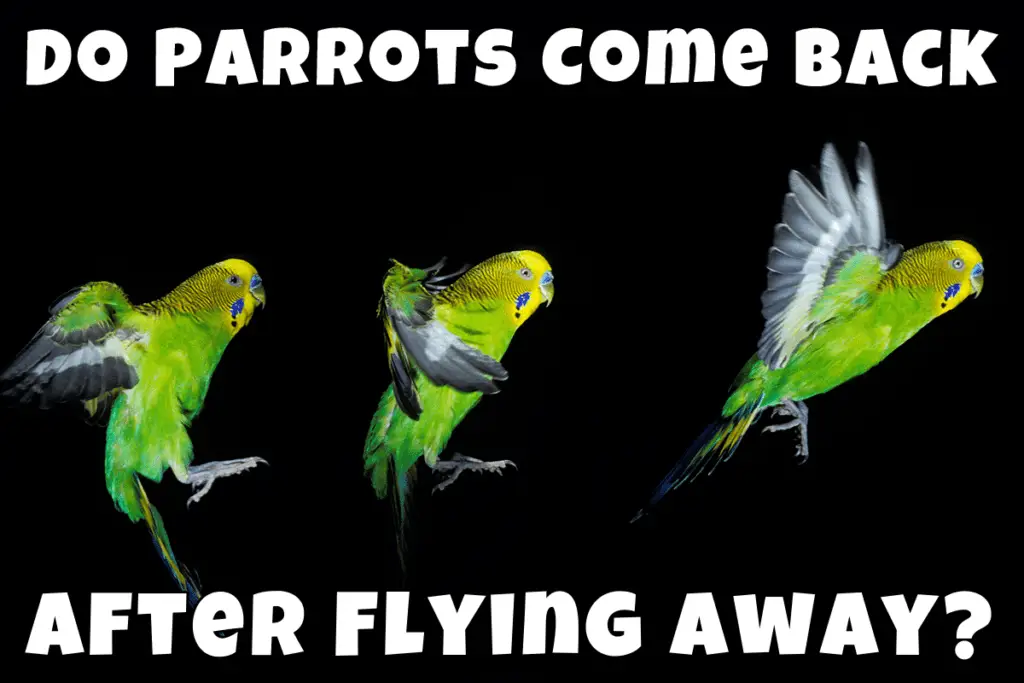Cats, dogs, and other house pets all come in different colors and patterns. However, there is no doubt that parrots are the most colorful of all pets. Their shiny feathers come in a myriad of hues. Plus, each one of 300 types of parrots spots its unique coloring pattern. And parrots like their colorful feathers just as much as we admire them. When it comes to feathers, parrots take extra steps to ensure their top conditions.
One of such natural processes is regrowing feathers. They will shed their old dull feathers from time to time to regrow new colorful ones. A healthy parrot will always have a set of shiny fresh feathers. A dull coating or feather loss (without regrows) indicates illness or poor health.
Let’s take a closer look at the process of regrowing feathers and why certain birds may be unable to do that.
Why Do Parrots Have Feathers in General?
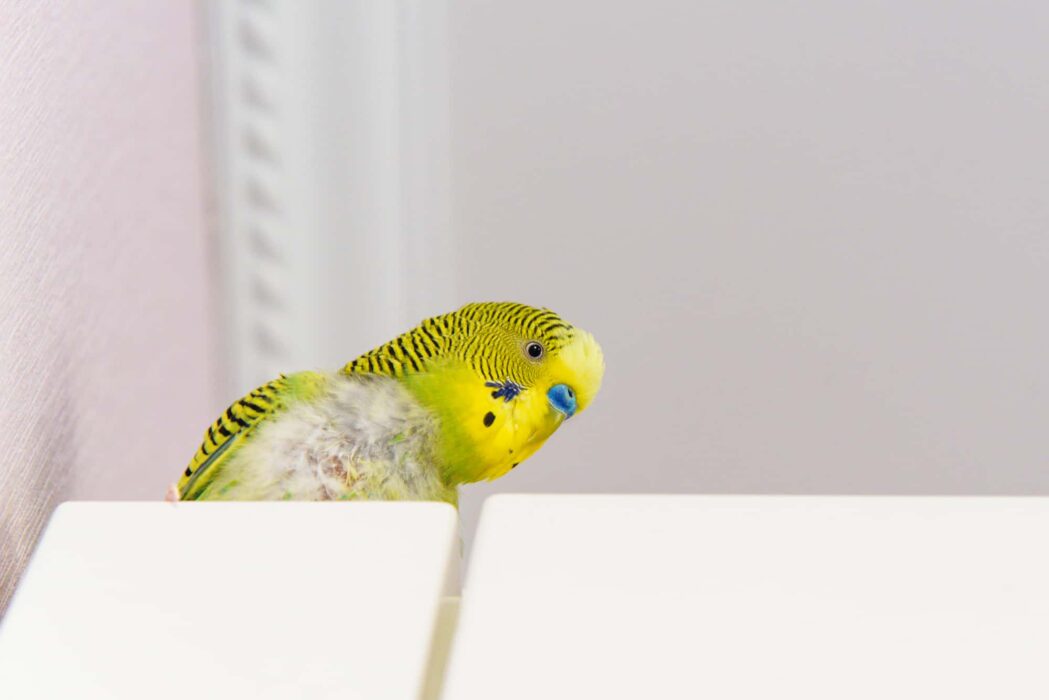
Why do birds have feathers instead of fur? Have you ever asked this question to your parents, teachers, or Google? I remember being thoroughly confused as a child why birds were not as fluffy as my cat. Unfortunately, I don’t remember what my parents told me, but now I know the answer to this question.
Yes, feathers also keep birds warm, just like fur does for other animals. You are correct in this regard. However, the most crucial reason is flight. Parrots have a variety of different feathers. The most important of them are aerodynamic feathers, especially the long ones on the tail and wings. That is why parrots are among the majority of birds who can fly. Some types of birds like penguins or emus use feathers solely for protection and warmth.
Usually, birds have a bit of a flipped situation to us, humans – male birds are prettier and more colorful to attract females. Some parrot types also have a noticeable distinction between male and female coloring, but most look similar. With people, the contrary belief has ruled for a long time, but things are changing now.
Can Parakeets Overeat? Beware the Dangers
Why Do Parrots Lose Feathers?
I know that you worry your pet dearly and notice every little detail amiss with the bird, but don’t panic if you see your bird losing its feathers. There are several reasons for that.
Molting
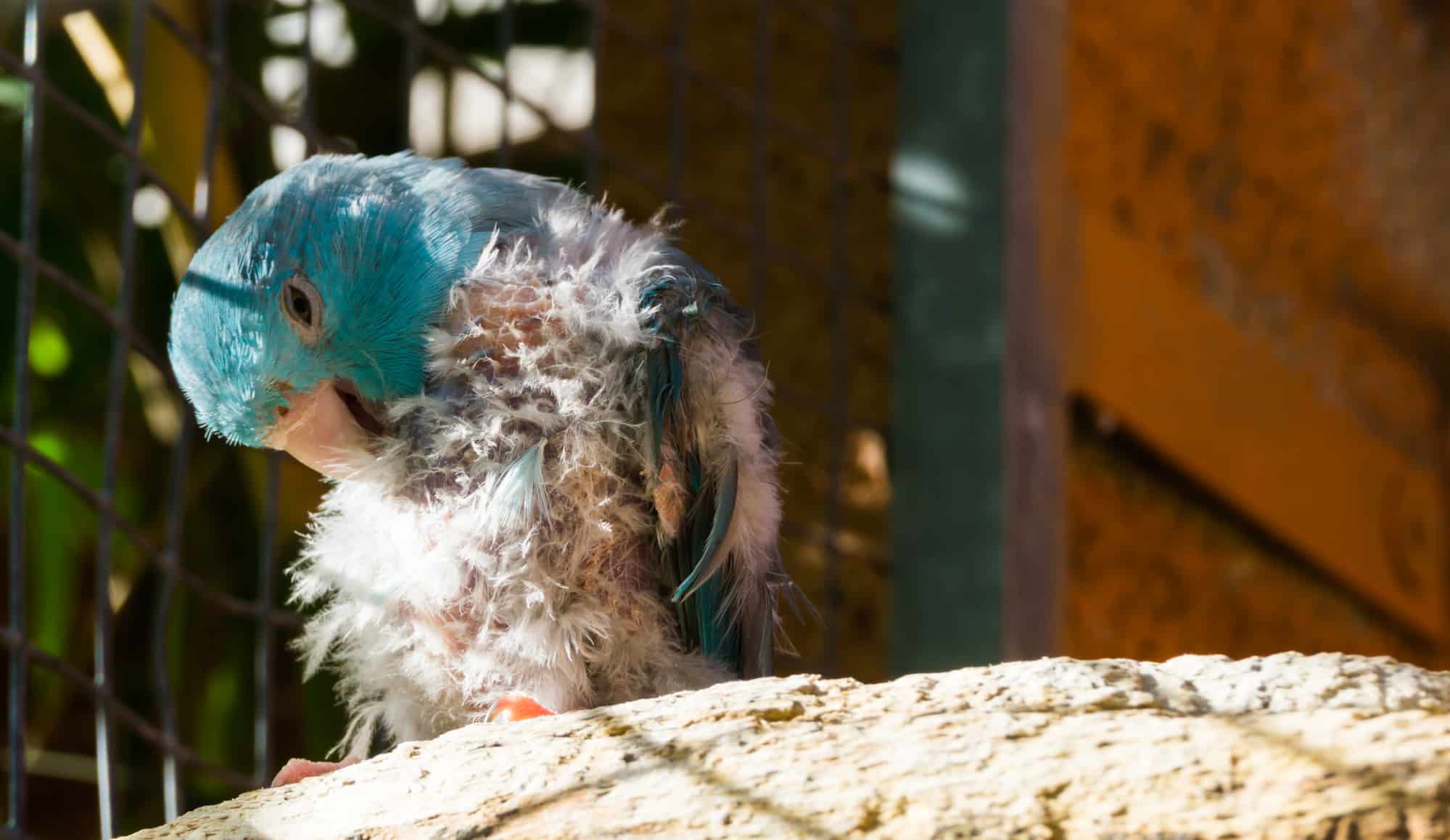
Molting is exactly the same as shedding for cats and dogs. A parrot will regularly lose its old and dull feathers and replace them with the ones. This is an entirely harmless “procedure” that happens about twice a year. Many parrots do that once a year if you live in a mild climate with only a slight change between seasons.
If it’s molting, new feathers will always regrow. So if you see that a parrot is losing seemingly healthy and shiny feathers, but it happens only once or twice a year, don’t worry. Parrots in the wild are susceptible to harsher conditions, and their feathers are worn out faster. A home parrot still has the habit in their genes, but the feathers are not as ruined.
Do Parrots Beaks Change Color?
Why Molting Occurs?
As I’ve mentioned, parrots will shed their feathers regularly to keep a healthy layer of protection and improve their flight with new, improved feathers.
Melatonin acts as the first indicator that the time for molting has come. Usually, parrots start molting right after the breeding season in the wild. Home parrots “support the tradition” and start shedding at the same time as well.
Generally, the process starts gradually with shedding wing feathers first, then body feathers, and, finally, tail feathers.
Right before the molting season begins, you could notice an increase in the number of cytokines. These are the major cellular communication chemicals that are involved in the turnaround of molting feathers in a bird.
Plucking
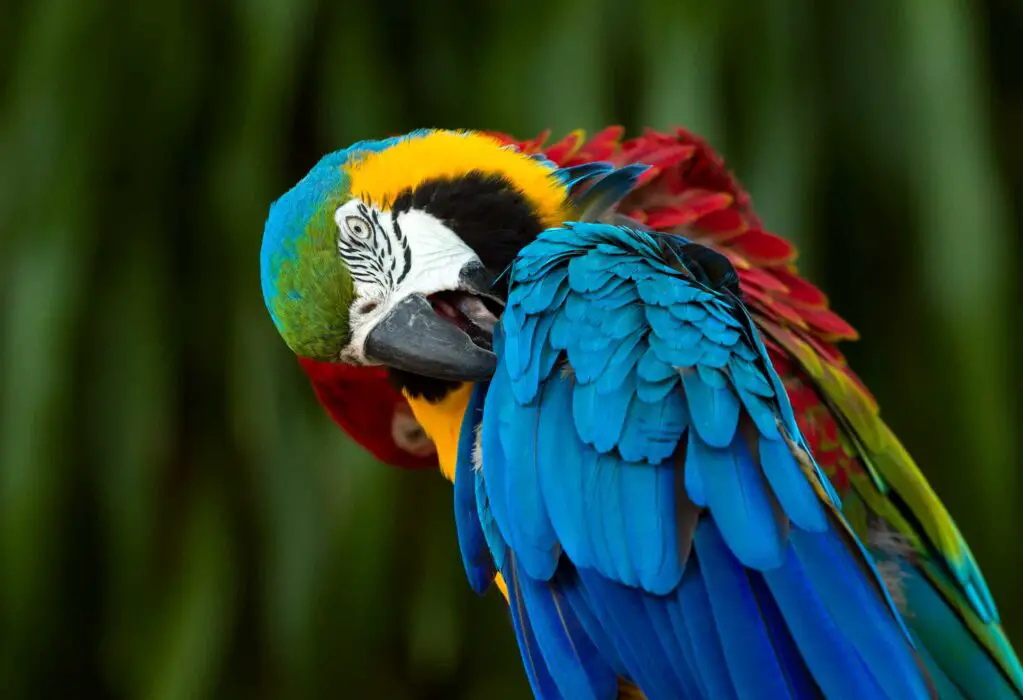
There is another possible reason for shedding feathers – plucking. It’s when a bird starts plucking its own feathers! This is a less favorable reason but fixable nevertheless.
There are many reasons why this occurs. Depending on the reason, you may stop the bird from keeping the rest of its beauty safe.
- It misses its mate. Suppose a bird’s mate dies or is taken away; the bird grieves. It often leads to plucking. Unfortunately, there are no set time limits on how long parrots grieve. It varies. You can help a bit by devoting more time to your bird, speaking to it, petting, and playing.
- Overstimulation of under-stimulation. This is a tricky balance. A parrot can start the gruesome plucking process when it’s bored or when it’s too energetic. Be sure to schedule your games into a balanced routine.
- It’s anxious or scared. Negative emotions lead to plucking more often. If your pet is under a lot of stress, plucking is almost guaranteed. Make sure that its cage is big enough, places away from noisy windows, and no strangers shove their hands in the cage!
Even if your bird has plucked all its feathers, it will regrow them. You may need to wait for the next molting season for approximately 12 months. If your pets are slightly longer, make sure to review its diet and add the nutrients it lacks. If the process takes waaaay too long, call the vet. But you’ll need to visit them during that period anyway. Ask for additional supplements when you see them.
How Long Does Your Parrot Live?
Skin Disease
This is the worst-case scenario for you and for the bird. If it’s losing its feathers due to some type of skin disease, the bird won’t be able to regrow them until the illness is gone.
Unfortunately, skin problems are common for parrots. Even when your bird stays at home at all times, this enemy can sneak up unnoticed.
Most of the time, they are not even bright from the outside! At home, several ‘irritators” can cause skin issues:
- air conditioning
- heating device
- scented candles
- dust and pollutants
As you see, parrot skin is very fragile. And to keep your parrot healthy, you need to offer proper conditions. When you remove the irritator, your parrot will regrow feathers and improve its skin condition.
There are also more severe skin diseases of bacterial and virus nature that you have to consult with your vet in any case. Unfortunately, I cannot give you recommendations besides sending you to the vet!
Why Don’t Parrot’s Feathers Grow Back?
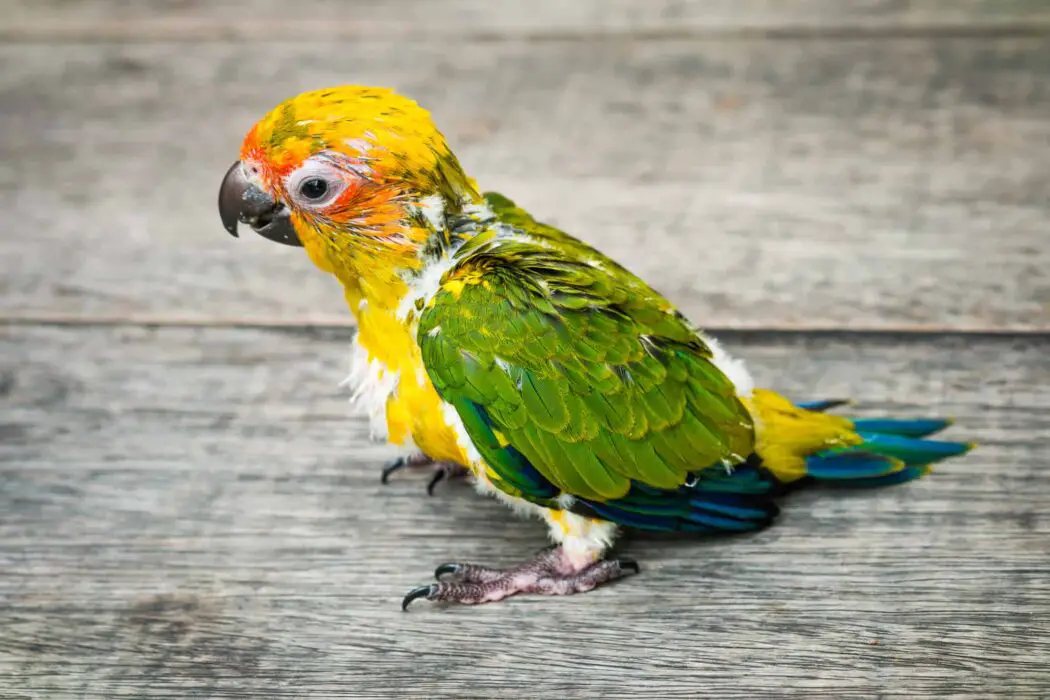
What are the reasons if you wait and wait after molting, you optimize the bird’s living conditions, but its feathers still won’t regrow? You see no skin issues, the bird doesn’t pluck, and molting has long gone?
Well, there is one issue that may be stopping new shiny feathers – premature baldness. Yes, parrots can have that as well. Yes, there are some genetic reasons, but most often, hair follicles get damaged too much and don’t work properly anymore. It can happen if your bird plucks its feathers too often and is too aggressive. Or the skin gets damaged physically, becomes infected, and is no longer capable of regrowing feathers.
In any case, a visit to a veterinarian can explain what’s happening with your bird.
Do Parrots Come Back After Flying Away?
I believe these are all the major reasons why parrots may be shedding feathers. As you see, in most cases, this is a natural process that brings no harm to your bird. Your beloved parrot will regrow feathers, and the new ones will be even shinier and prettier than the old ones. In most cases, you don’t even need to help a parrot with the process, unlike with cats and dogs. And that is one of the many reasons why parrots make good pets for just anybody! No grooming required!
If you have more questions about molting, its intensity, frequency, and tip, feel free to ask your questions in the comments section below!
For now, I wish your parrot always has beautiful, healthy, and strong feathers.

